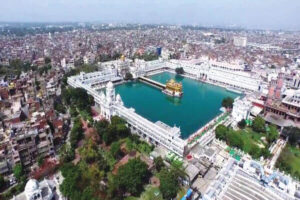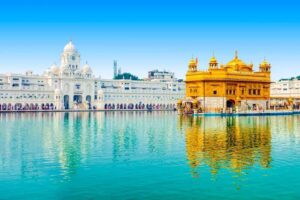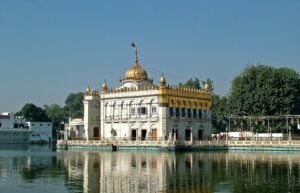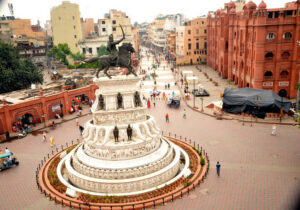Amritsar, Punjab’s biggest city was the center of celebrations of the 400th anniversary (Parkash Utsav) of the installation of the Guru Granth Sahib at the Golden Temple, on September 1, 2004. The Guru Granth Sahib is the holy book from which Sikhism, one of the youngest religions of the world, is derived. The Guru Granth Sahib was first installed in the Golden Temple in September 1604 by the Fifth Guru, Guru Arjan Dev, who had completed the magnificent structure. Since then, devotees from far and near have flocked here to pay obeisance and seek blessings.
The holiest and most exalted of all Sikh shrines, Amritsar’s famed Golden Temple stands there in simple majesty, the gilded splendour of its dome and panellings silhouetted softly in the pool of nectar.
The Golden Temple’s noble story began with the Fourth Sikh Guru, Guru Ram Das, sanctifying the Pool of Nectar in the 16th Century. The pool itself had long been associated with Indian legends and considered blessed with miraculous healing powers. Legend has it that thousands of years ago Lord Rama’s two sons had been taught the Ramayana here. In 1574, Guru Ram Das set up home – known as Guru-ka-Mahal- by the side of the pool, bought the pool and its surrounding land and excavated the tank to construct a shrine at its centre.
The Jallianwala Bagh massacre, involving the killing of over 300 Indian civilians by a senior British military officer, Reginald Edward Harry Dyer took place on 13 April 1919 in the heart of Amritsar.
Amritsar is well connected with many Indian cities by air, rail and bus. Many international flights also land here.





